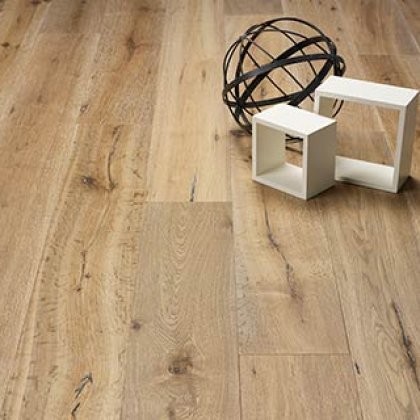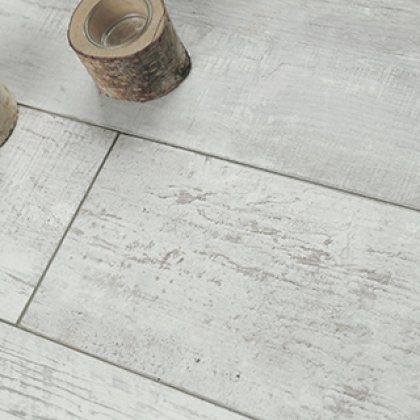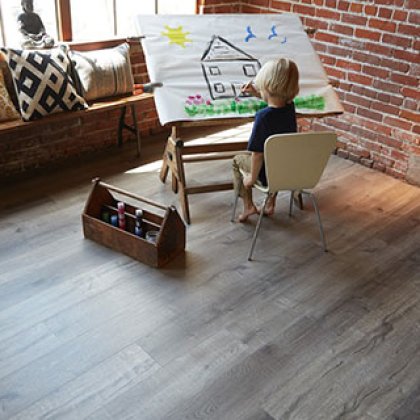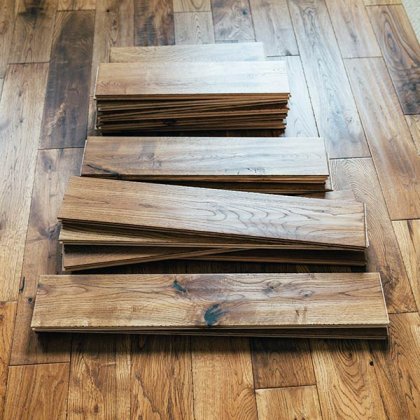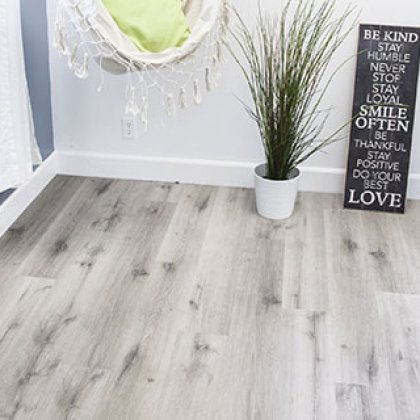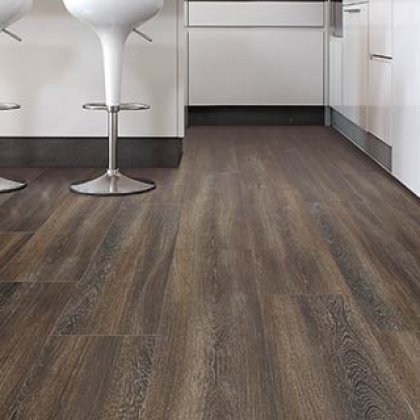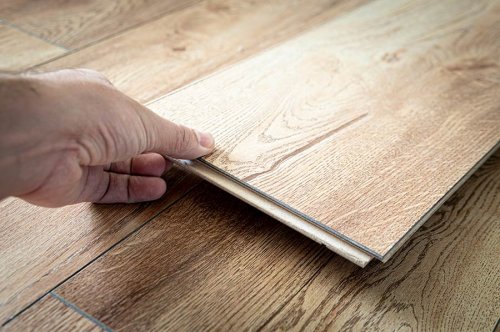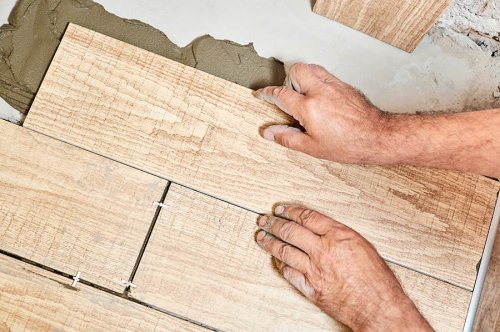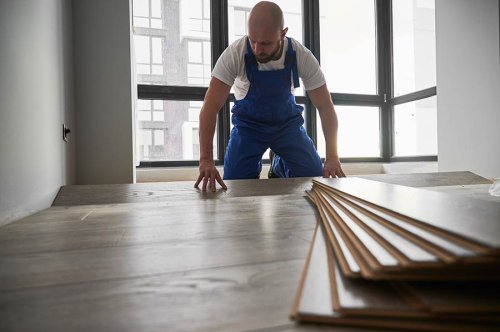Laminate or Engineered Wood: Choosing Your Ideal Flooring
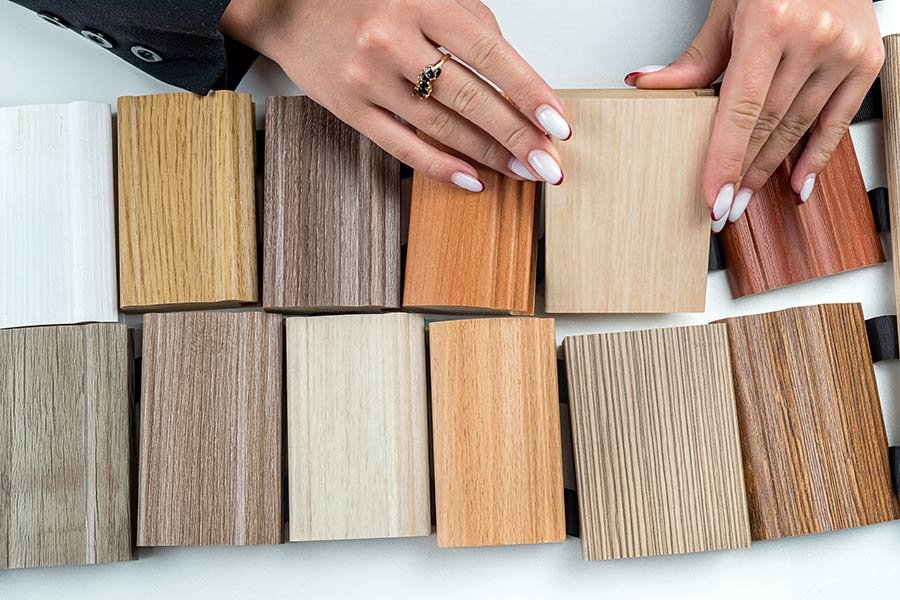
When choosing flooring, the debate between laminate and engineered wood is a biggie. On one side, laminate floors offer durability and an easy-peasy cleaning routine, perfect for busy homes. Flip the coin, and you've got engineered wood, boasting that authentic charm with a sturdy feel underfoot. Both have their fan clubs, but it's not just about picking sides. It's about nailing down what matters most to you in your living space. Durability or authenticity? Ease or elegance?
Key Takeaways
- Laminate and engineered wood are both good choices, but they fit different needs. Think about what's most important for you: cost, look, or how long it will last.
- If you care a lot about how your floors look, engineered wood is closer to real wood than laminate.
- For homes with kids or pets, laminate floors might be better because they're tougher and easier to clean.
- Engineered wood can be fixed up (like sanding) more times than laminate. This makes it last longer but it costs more.
- Putting in laminate floors is usually cheaper and something you might be able to do yourself. Engineered wood often needs a pro to install it.
- Always check how much you're spending and what you're getting. Sometimes, paying a bit more at first for engineered wood can save money in the long run because it lasts longer.
Key Differences
Material Makeup
Laminate floors come from synthetic materials. They have a core of fiberboard and a photographic layer on top. This makes them strong and durable.
Engineered wood, however, has a thin real wood veneer on its surface. It sits on layers of plywood or hardwood. This gives it a more natural look than laminate.
Durability
Laminate is known for being more resistant to scratches and wear. It handles heavy traffic well. This makes it ideal for busy homes and spaces with pets or kids.
Engineered wood can scratch more easily than laminate. But, it can be sanded down and refinished because of the real wood top layer.
Appearance
Engineered wood offers the beauty of real wood because of its top layer. Each piece is unique, with natural grain patterns.
Laminate flooring can mimic the look of wood. Yet, it doesn't match the depth and texture of engineered wood's real veneer.
Cost
Laminate is often less expensive than engineered wood. It provides a cost-effective way to get a wood-look floor without the higher price tag.
Engineered wood costs more due to its real wood layer. But, many find the extra cost worth it for the authentic look and feel.
Appearance and Feel
Wood Styles
Laminate flooring offers versatility in appearance. It can mimic various wood styles. This makes it easy to find a look that fits your space.
Laminate is made with a photographic layer. This layer can have any wood design. So, you get many choices.
Authentic Feel
Engineered wood brings a more authentic wood feel. Its top layer is real wood. This gives your floors a natural warmth and texture.
People love engineered wood for its real wood surface. It feels like solid wood underfoot.
Refinishing Options
Engineered wood can be refinished. This extends its life and refreshes its look.
You can sand and refinish engineered wood once or twice. This depends on the thickness of the top layer. Refinishing makes old floors look new again.
Durability and Maintenance
Laminate Cleaning
Laminate floors stand out for their ease of cleaning. A simple sweep or mop can keep them looking fresh. They resist stains and spills better than many other flooring types. This makes them a top choice for busy homes.
Laminate's protective layer shields it from scratches and dents. Kids and pets running around? No problem. Laminate can handle it.
Engineered Wood Care
Engineered wood, while beautiful, needs more care. It's more prone to water damage than laminate. Spills must be wiped up quickly to prevent harm.
This flooring type also scratches more easily. Owners might need to be cautious about furniture placement and pet nails.
Refinishing Limits
One major downside of laminate is its inability to be refinished. If it gets damaged, the only option is replacement. This can be costly and inconvenient.
Engineered wood, on the other hand, can often be sanded down and refinished. This can give your floor a new lease on life if it starts to show its age.
Cost and Installation
Laminate Pricing
Laminate flooring is often less expensive than engineered wood. It's made from composite wood pressed together at high temperatures. The image of hardwood is then placed over the composite wood, covering it to form the laminate. Not only does this process make it more affordable, but it also reduces the cost of installation.
People choose laminate when they want a hardwood look without the hefty price tag. You can install laminate floors yourself, saving even more money. The pieces snap together with ease, making it a popular choice for weekend DIY projects.
Engineered Wood Costs
Engineered wood, while pricier, offers a real wood top layer. This makes it feel more like solid hardwood underfoot. Its cost is higher due to the materials and manufacturing process involved. Engineered wood planks are made by bonding layers of hardwood and plywood together, creating a sturdy yet flexible board.
Though some homeowners tackle engineered wood installation themselves, many opt for professional help. The correct installation ensures the floor lasts longer and performs better. Hiring a pro might increase your costs, but it can be worth it for the expert touch.
DIY or Pro?
Both laminate and engineered wood can be installed as DIY projects. However, engineered wood might need a professional for the best outcome. This decision impacts both the initial cost and long-term satisfaction with your flooring.
Choosing between the two often comes down to budget and desired look. Consider how much you're willing to spend and whether you prefer an easier DIY project or a more authentic wood feel that might require professional installation.
Closing Thoughts
Choosing between laminate and engineered wood for your flooring boils down to what matters most to you: cost, appearance, durability, or ease of installation. Laminate offers a budget-friendly option with impressive durability and low maintenance, while engineered wood brings a touch of luxury and authenticity that can increase your home's value. Both have their pros and cons, but the right choice depends on your priorities and lifestyle needs. Remember, the best flooring is one that fits your daily life and brings comfort and joy to your space.
Now it's time to make your decision. Consider what you've learned about the key differences, appearance, feel, durability, maintenance, cost, and installation. Think about what fits best in your home and go for it. Your perfect floor is waiting to transform your space. Ready to take the next step? Start exploring your options today.
Frequently Asked Questions
What are the main differences between laminate and engineered wood?
Laminate is made from composite wood pressed together at high temperatures, with a photographic layer on top. Engineered wood consists of a thin veneer of real hardwood over layers of plywood or hardwood. This fundamental composition difference affects their appearance, feel, durability, and cost.
Is engineered wood more durable than laminate?
Engineered wood is generally more durable than laminate because it can be sanded and refinished several times to remove wear marks. Laminate, however, cannot be easily repaired once scratched or dented but is highly resistant to scratches and moisture compared to untreated hardwood.
Can laminate flooring look as good as engineered wood?
Laminate flooring has improved significantly in appearance and can closely mimic the look of real wood. However, engineered wood contains a layer of real hardwood, giving it a more authentic look and feel than laminate can achieve.
Which is easier to maintain, laminate or engineered wood?
Laminate floors are easier to maintain due to their tough, protective layer which makes them highly resistant to stains, spills, and fading. Engineered wood requires more care, including occasional refinishing to maintain its appearance.
How do the costs compare between laminate and engineered wood flooring?
Laminate flooring is generally less expensive than engineered wood. The lower cost reflects its synthetic composition and simpler manufacturing process. Engineered wood's price is higher due to its real wood veneer and more complex construction, offering a closer match to solid hardwood aesthetics.
Is installation of laminate quicker than engineered wood?
Yes, laminate flooring often features a click-together design that makes DIY installation faster and less costly compared to engineered wood. Engineered wood may require professional installation, especially if it needs to be glued or nailed down, increasing overall costs.
Which is better for high-moisture areas, laminate or engineered wood?
Laminate flooring typically offers better resistance to moisture and humidity than engineered wood, making it a better choice for areas like kitchens and bathrooms. However, specific waterproof engineered wood products are also available for these applications.





